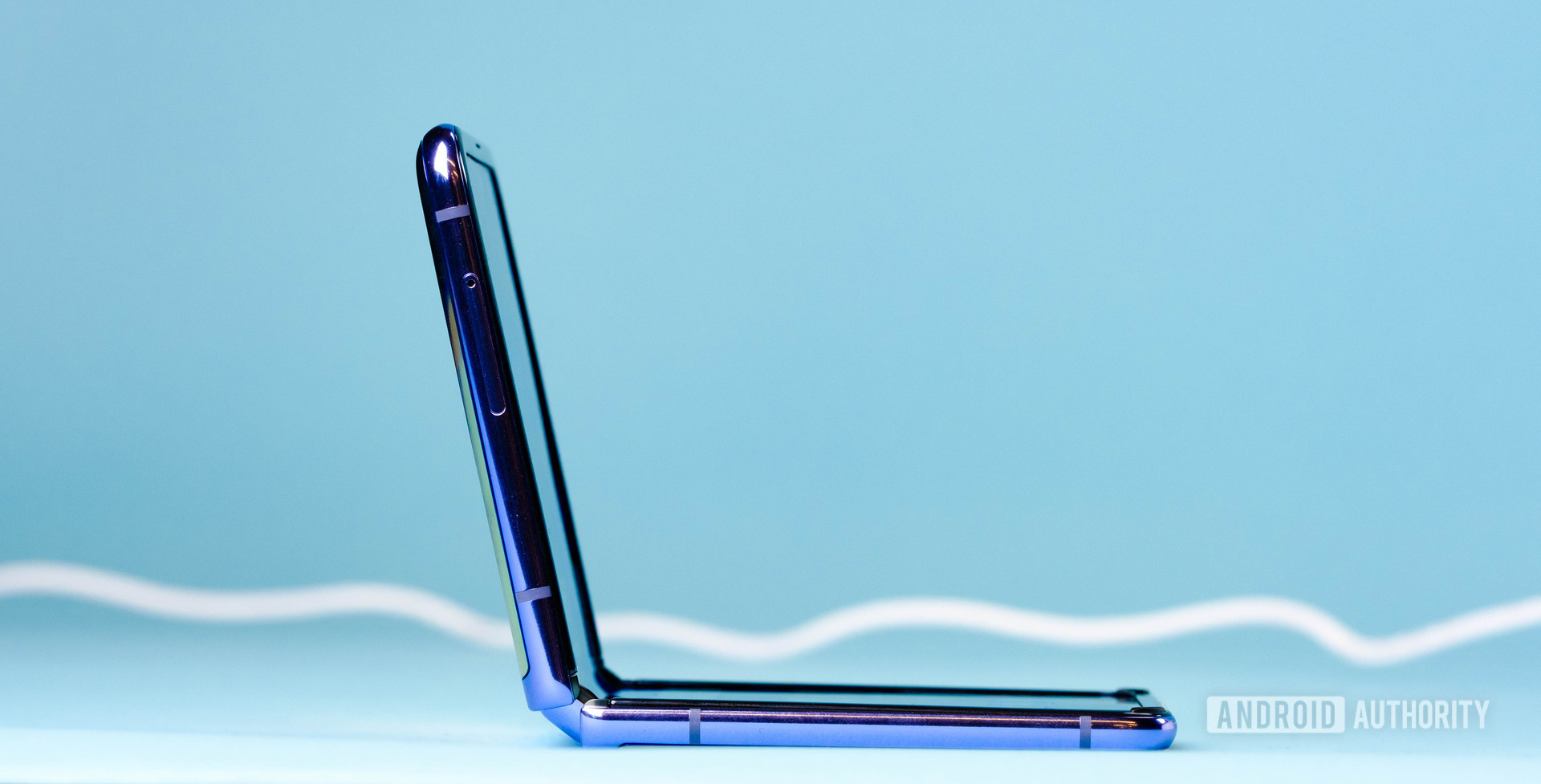Samsung’s Galaxy Z Flip boasts at least one structural improvement that makes its display better than the Galaxy Fold from last year. It uses a new ultra-thin glass (UTG) screen instead of a plastic display. This was supposed to make the Galaxy Z Flip’s display more resistant to scratches compared to the Galaxy Fold’s plastic screen. However, a durability test of the phone suggests otherwise.
Well-known YouTuber and destroyer of phones Zack Nelson recently performed his famous JerryRigEverything durability test on the Galaxy Z Flip (see above). While putting the new clamshell foldable through its paces on the Mohs scale of hardness, Nelson quickly realized that the display of the phone scratches as easily as that of its predecessor.
Related: 24 hours with the Galaxy Z Flip: Surprised by how much I like it
The display starts scratching at level two on the Mohs scale (equivalent to gypsum). The YouTuber notes that if this were made of real glass, it would only show signs of scratching at level five or six, like most other phones that have glass displays.
In fact, deeper grooves start appearing on the Z Flip’s display at level three. At level four, the pick manages to cut open the surface of the display. Nelson was also able to scratch the screen with his fingernail. And he demonstrated that the screen is also physically affected by heat in a way only plastic would, not glass.
Nelson says that the Galaxy Z Flip’s display does not have the scratch resistance and structural benefits that come with the use of glass. He suggested that the phone’s display is probably made of some kind of plastic polymer with specks of glass inside.
Obviously, this is not a good look for Samsung. It would be a big deal if the company lied about the use of ultra-thin glass. Did it though?
Samsung’s statement
“Samsung’s first-of-its-kind UTG technology is different from other Galaxy flagship devices. While the display does bend, it should be handled with care,” Samsung wrote in an emailed statement to The Verge. “Also, Galaxy Z Flip has a protective layer on top of the UTG similar to Galaxy Fold.”
Backing up Samsung’s claims, Display Supply Chain Consultants founder Ross Young also tweeted about the use of plastic layers on the display.
It is ultra thin glass and there are multiple plastic films both above and below the UTG…
— Ross Young (@DSCCRoss) February 17, 2020
Young adds that the plastic layer atop the ultra-thin glass is for shatter protection and safety in the event that the glass breaks. This way, the glass shouldn’t slice your finger in the event that it’s physically damaged.
Looks like even though there’s ultra-thin glass on the Z Flip, it carries the same plastic coating as the Galaxy Fold. This means that the display can easily suffer scratches from keys, pens, and even your own fingernails. However, the plastic layer could protect the actual glass display from getting permanently damaged.
What about the overall durability of the phone?
Despite how easily the display on the Galaxy Z Flip scratches, Nelson notes that it’s the sturdiest foldable phone he has tested. The Z Flip performs fairly well in its bend test, keeping its display functional even after a crack in the frame. Surprisingly, the ultra-thin glass does not crack when the phone is bent outwards.
Nelson also praises Samsung’s new hinge design as it prevents dust and gravel from getting stuck inside. It also doesn’t cause the screen to lift where the fold happens, unlike the Motorola Razr clamshell.
What do you think of the new Galaxy Z Flip? Do you like where Samsung is going with foldable phones? Let us know your thoughts in the comments section below.
More posts about Samsung
from Android Authority https://ift.tt/2Hwv072






No comments:
Post a Comment